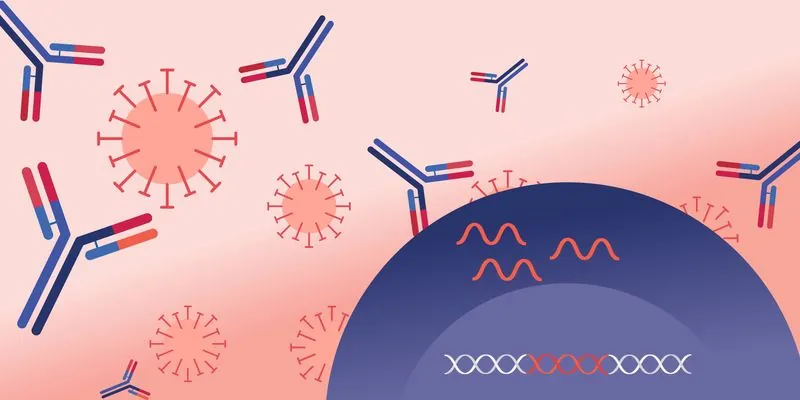
Revolutionizing the Fight Against HIV: The Power of Antibodies to Boost Immune Response
2025-05-28
Author: John Tan
The human immunodeficiency virus (HIV) can unleash havoc once it infiltrates a cell, embedding its genetic material into the host's DNA and forming an unbreakable bond. This grim scenario leaves the host cell with two options: it either churns out more viral copies to infect others or lies dormant, deep in a hidden reservoir where it evades detection by the immune system. This latency is the key reason why HIV remains an incurable disease, despite remarkable advancements in antiretroviral therapy (ART). According to David Margolis, a top infectious disease researcher at the University of North Carolina at Chapel Hill, even decades of treatment may not suffice to eliminate the virus entirely.
The Science Behind Latent HIV and Its Challenges
Years of research have focused on awakening these dormant cells through latency-reversing agents. While initial trials suggest these agents can activate latent cells, they have yet to significantly reduce the viral reservoir. Enter a game-changing approach combining these agents with broadly neutralizing antibodies (bNAbs). Jesper Gunst, a physician scientist at Aarhus University, and his team are pioneering this strategy, showing that bNAbs can enhance the immune response, resulting in effects reminiscent of vaccination, particularly in newly diagnosed patients.
Using bNAbs to Control HIV: A Breakthrough Approach
In exciting clinical trials, Gunst's collaboration has revealed that administering bNAbs alongside latency-reversal drugs significantly accelerates the reduction of viral reservoirs. Patients treated with this combination demonstrated remarkable control over the virus without needing ART, an unprecedented outcome in HIV research. One participant achieved complete control and never returned to ART, showcasing the potential of bNAb therapy.
Global Efforts in HIV Prevention and Treatment
As research expands, teams worldwide are exploring the efficacy of bNAbs not only in treatment but also in prevention. Gabriella Scarlatti, a pediatric virologist at the San Raffaele Scientific Institute, leads a Phase 1 trial designed to protect infants from HIV transmission via breast milk, highlighting the complexity of preventing mother-to-child transmission. Despite the challenges posed by ART adherence post-pregnancy, Scarlatti's team remains committed to finding solutions.
The Future of bNAbs: From Trial to Treatment
However, hurdles remain. Funding limitations and recent policy changes threaten ongoing trials. Scarlatti, undeterred, believes the promising results so far justify continued efforts. As she put it, "The results are so good for the time being that we can't stop just now. We would be losing the opportunity to give kids an easy way to remain HIV-free."
A New Hope in the Fight Against HIV
The innovative combination of bNAbs with latency-reversing agents signals a new era in HIV treatment—transforming previously unmanageable elements of the virus into targets for immune system mobilization. The outlook is brighter than ever, as researchers strive to overcome remaining challenges and inch closer to a lasting cure.


 Brasil (PT)
Brasil (PT)
 Canada (EN)
Canada (EN)
 Chile (ES)
Chile (ES)
 Česko (CS)
Česko (CS)
 대한민국 (KO)
대한민국 (KO)
 España (ES)
España (ES)
 France (FR)
France (FR)
 Hong Kong (EN)
Hong Kong (EN)
 Italia (IT)
Italia (IT)
 日本 (JA)
日本 (JA)
 Magyarország (HU)
Magyarország (HU)
 Norge (NO)
Norge (NO)
 Polska (PL)
Polska (PL)
 Schweiz (DE)
Schweiz (DE)
 Singapore (EN)
Singapore (EN)
 Sverige (SV)
Sverige (SV)
 Suomi (FI)
Suomi (FI)
 Türkiye (TR)
Türkiye (TR)
 الإمارات العربية المتحدة (AR)
الإمارات العربية المتحدة (AR)